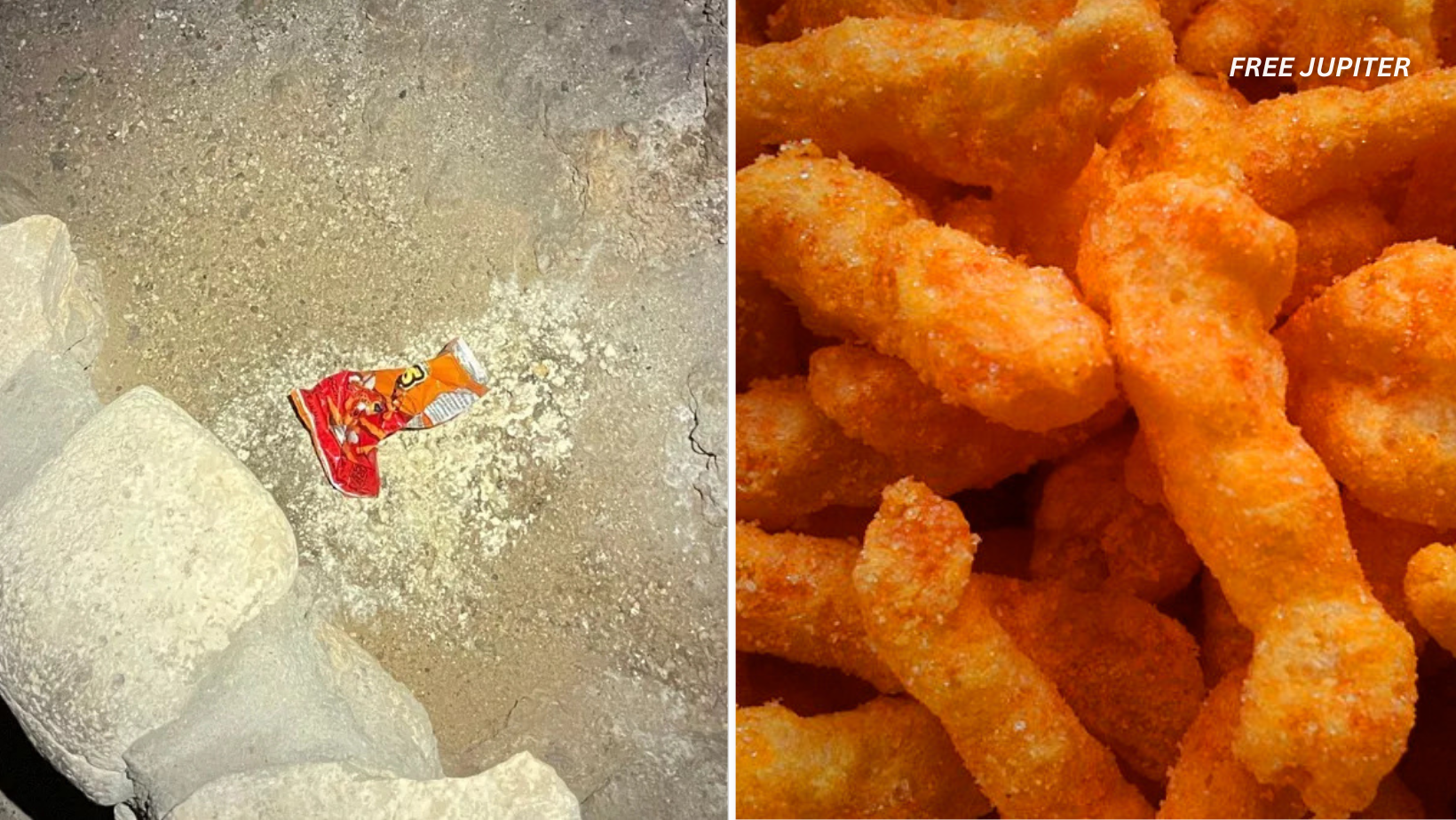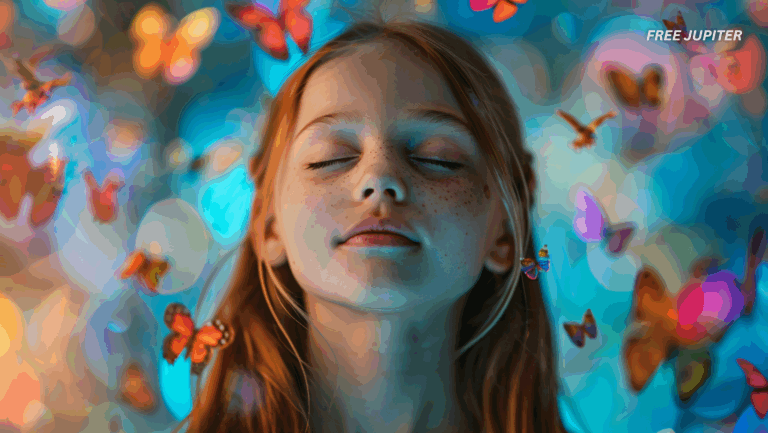Friendly Note: FreeJupiter.com shares general info for curious minds 🌟 Please fact-check all claims—and always check health matters with a professional 💙
It sounds like something from a comedy sketch: a tourist drops a bag of Cheetos in a cave, and scientists start panicking. But this real-life event at Carlsbad Caverns National Park wasn’t funny—it was a wake-up call.
Tucked beneath the New Mexico desert, Carlsbad Caverns is a marvel of nature. Its largest chamber, ominously dubbed the Big Room, is over 4,000 feet long and nearly 300 feet tall. Visitors often describe it as something out of a fantasy novel. But beneath its otherworldly beauty lies a surprisingly fragile ecosystem—so delicate, in fact, that one forgotten snack became a major environmental issue.
The Cheesy Catalyst: How It All Began
The story begins, quite simply, with a bag of Cheetos. A tourist, perhaps distracted by the cave’s surreal stalactites or overwhelmed by hunger, accidentally—or carelessly—left behind their snack. No big deal, right? After all, it’s just a few crumbs.
But caves aren’t like parks or sidewalks. Unlike open-air ecosystems that can more easily absorb small human disturbances, caves function more like sealed laboratories—dark, humid, and isolated from the outside world. Evolution down there takes a different path. The creatures and microbes that live in caves often go thousands of years without encountering anything from the surface. So when something artificial shows up, it’s like dropping a glowing alien artifact into the middle of a monastery.
What Happens to a Cheeto in a Cave?
Now, imagine what happens to a Cheeto in a place where it’s damp, dark, and air circulation is minimal. Spoiler alert: it doesn’t stay crunchy for long.
Thanks to the cave’s humid conditions, the puffy snack quickly softened and began to break down. This squishy, cheese-dusted mass became irresistible not just to insects like cave crickets and spiders, but also to microscopic fungi and bacteria that had never encountered anything like it before.
It was, unintentionally, an all-you-can-eat buffet for cave dwellers. But this sudden abundance created an unnatural food web—one that had no place in the cave’s normal rhythm.
A Domino Effect in a Closed World
Let’s break this down: more food means more bugs. More bugs attract predators like spiders. More waste products feed fungi and bacteria. And more biological activity changes the delicate balance of nutrients, humidity, and even the air quality inside the cave.
In a short amount of time, this one bag of Cheetos had jumpstarted a mini-ecosystem—one that was artificial, invasive, and disruptive. Park rangers quickly noticed the unusual growth of mold and the sudden increase in insect activity, a clear sign that something was off. They located the snack remnants and spent a painstaking 20 minutes removing not just the Cheetos, but the web of consequences that had started to grow around them.
This wasn’t just trash cleanup—it was a form of ecological triage.
Read more: This Natural Plant Extract Can Remove Up to 90% of Microplastics From Water
Echoes of Past Mistakes: A History Lesson from France
To the untrained eye, it might still seem like an overreaction. But seasoned ecologists know better. A famous cautionary tale comes from the Lascaux Caves in France, which house some of the oldest known human art—prehistoric paintings over 17,000 years old. When the caves were opened to the public, human presence introduced foreign microbes. Despite strict controls, those microbes eventually led to outbreaks of mold that permanently damaged parts of the artwork. No amount of cleaning or high-tech restoration could completely reverse the damage.
Carlsbad Caverns doesn’t contain prehistoric paintings, but it does contain an equally precious and understudied world of living organisms—many of which may not exist anywhere else on Earth. Scientists have found bacteria in the cave that can digest minerals and survive without sunlight. Some of these extremophiles could even help researchers develop new antibiotics or understand how life might survive on other planets.
So yeah—a bag of Cheetos isn’t just a snack in this setting. It’s a biochemical grenade.
Why Caves Are So Sensitive
Caves evolve in slow motion. They’re isolated, nutrient-poor, and remarkably stable over long periods of time. That makes them incredibly special—and incredibly easy to mess up. When you toss a peanut butter wrapper in the forest, squirrels or rain may handle it. In a cave, it could sit for years, feeding things it shouldn’t and changing things it never should have touched.
Many cave-dwelling species, such as blind salamanders, rare beetles, and translucent fish, rely on a tightly regulated web of energy flows. Adding a high-calorie food like Cheetos is like setting off fireworks in a library. Everything gets thrown out of sync.
The Bigger Picture: Small Actions, Big Ripples
At its heart, this story is about more than just a cheesy snack. It’s a vivid, cheesy-orange reminder that nature doesn’t need us to destroy it with bulldozers or oil spills—we can do damage with nothing more than a thoughtless snack toss.
The National Park Service summed it up perfectly: “A spilled snack bag may seem trivial, but to the life of the cave, it can be world-changing.”
And that’s not just poetic—it’s scientific.
Read more: Companies That Replaced Humans With AI Are Now Regretting It—Here’s Why
🧠 What We Can Learn (and What Not to Drop)
The story of the dropped Cheetos isn’t just about junk food in the wrong place—it’s a broader lesson about how deeply connected we are to the environments we move through, whether we realize it or not. Nature doesn’t exist in a bubble. It notices what we do, even when we think we’re being harmless.
When you step into a place like Carlsbad Caverns, you’re entering a space that took millions of years to form and has been relatively untouched by the outside world. One tiny action—like dropping a snack—might seem laughably small, but in an environment that doesn’t get a lot of “visitors” (including nutrients or outside organisms), the effects can be magnified beyond imagination.
So what can we, as everyday adventurers, explorers, or even just snack-carrying tourists, actually do with that knowledge?
1. Pack It In, Pack It Out
Let’s start simple: whatever you bring into a natural environment—snacks, bottles, tissue paper, wrappers, plastic bags—bring it back out with you. Even something as seemingly harmless as a piece of fruit can introduce foreign bacteria or mold that native environments aren’t equipped to deal with. Biodegradable doesn’t mean harmless.
🍌 Pro tip: Even banana peels can take up to two years to decompose in dry or cold environments—and may attract animals to unsafe places.
2. Respect the Micro-World
The smaller and quieter a place is, the easier it is to damage. Caves, coral reefs, alpine tundras, and even tide pools operate on intricate micro-ecosystems. When we think of nature, we often picture forests and oceans, but the real action happens at the tiniest scales. And the smaller the world, the louder our presence.
That means every step, every breath, every discarded crumb matters. Truly.
3. Follow the Footpaths—Seriously
There’s a reason park rangers and scientists go through the trouble of creating guided trails. These aren’t just for our safety—they’re to protect everything else. Stepping off trail might crush rare plants, disturb hidden animal burrows, or kick up spores or microbes that shouldn’t be moved.
🚫 One small detour off the path might be enough to disturb a fragile patch of lichen that took decades to grow.
4. Be a Steward, Not Just a Spectator
Being a visitor to nature comes with a certain responsibility—not to dominate it, but to honor it. It’s easy to forget, amid the selfies and guided tours, that many of these environments existed long before us and will (hopefully) exist long after. We’re just passing through.
Try leaving nature a little better than you found it. Pick up stray trash. Remind others—kindly—not to litter. Even small acts ripple outward.
5. Let Curiosity Inspire Caution
If you feel awe when walking into a cave or hiking through an ancient forest, that’s a good thing—it means you get it. That feeling of wonder should go hand-in-hand with a sense of care. If something looks untouched, it’s not an invitation to touch—it’s a reminder of how rare that untouched state is.
6. Think Big by Thinking Small
Nature doesn’t need us to bulldoze a rainforest to cause harm. Sometimes, all it takes is a cheese puff.
That doesn’t mean we should feel paralyzed by guilt every time we head outdoors—but it does mean we should bring mindfulness with us. Every wrapper matters. Every step has weight. Every choice, even the choice to double-check your backpack for trash before you leave, is a vote for preservation.
So, the next time you’re out in the wild—whether it’s a sprawling cave, a mountaintop, or a quiet park trail—remember the cautionary tale of the Cheetos. Nature isn’t just a backdrop for our adventures. It’s a living, breathing system that reacts to us—even when we think it’s not watching.










